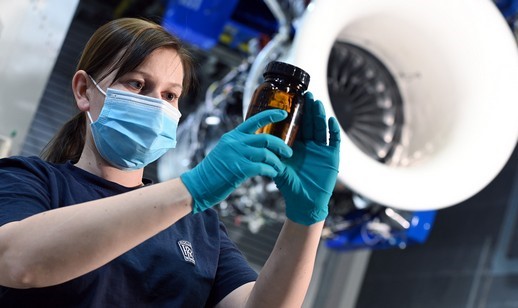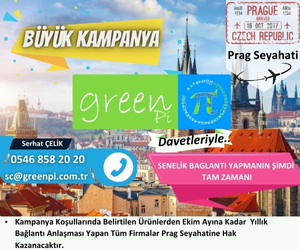Kategori : ENERGY AGENDA NEWS, GREEN TECHNOLOGY AND INFORMATION NEWS - Tarih : 09 September 2021
Rolls-Royce is committed to reducing emissions from its own operations and facilities to net zero by 2030, and to play a leading role in helping industries in which it operates achieve net zero carbon emissions by 2050. Rolls-Royce, which plans to completely decarbonize its own operations and operations in the aviation industry on the IntelligentEngine platform, announced that it has chosen to use systems such as Microsoft Azure, Azure Databricks and Power BI to obtain data that will help them in this journey.
Leading the “power” of great importance for over 100 years, Rolls-Royce announced that it has  accelerated the transition to new ways of working in order to continue this process for the next 100 years. Rachael Everard, Head of Sustainability at Rolls-Royce, said: “As Rolls-Royce, we want to exist for another 100 years, and to achieve that we need to decarbonize quickly. We operate in sectors where it is most difficult to reduce carbon emissions. This position makes our innovation in the sectors more important as the world embraces a net zero carbon future.”
accelerated the transition to new ways of working in order to continue this process for the next 100 years. Rachael Everard, Head of Sustainability at Rolls-Royce, said: “As Rolls-Royce, we want to exist for another 100 years, and to achieve that we need to decarbonize quickly. We operate in sectors where it is most difficult to reduce carbon emissions. This position makes our innovation in the sectors more important as the world embraces a net zero carbon future.”
The partnership with Microsoft will help Rolls-Royce meet its commitment to achieve net zero carbon emissions by 2050.
Increasing data volume
In the work with Microsoft, the storage and analysis of high volumes of data was provided in order to better observe the working environment of Rolls-Royce engines.
Rolls-Royce Head of Technology Benjamin Wilkinson, regarding the work with Microsoft to solve the problem of managing large amounts of data, said, “The data size and processing power we needed could not be provided with an infrastructure to be hosted on-premises. But since we started using Azure, we’ve moved from being able to run one simulation at a time, to a point where we can run at least 100 simultaneous simulations.”
Gaining new insights using Microsoft Azure
Wilkinson continued, “We use artificial intelligence (AI), machine learning (ML) and advanced analytics to generate new insights and empower our engineers to do their jobs better. We can also support our customers by using digital insights to optimize the types of operations our customers use, such as fuel reduction.”
Treating each engine individually
Rolls-Royce states that each engine is handled individually. Rolls-Royce, which follows step-by-step how each engine produced is developed, maintained and operated, reveals that with the help of this work with Microsoft, it can create specific operating and maintenance recommendations for each engine separately.
Aiming to minimize waste in this process, Rolls-Royce aims to shorten the time between inspections and extend the life of high-cost components. Rolls-Royce also emphasizes the use of less material and energy during maintenance in its operations.
Rolls-Royce, which aims to provide fewer interruptions and disruptions for its customers thanks to its cooperation with Microsoft, also advises its customers on how to reduce carbon emissions.
Rolls-Royce also acts meticulously on the protection of data shared by its customers. Relevant data is securely stored on the IntelligentEngine platform and is used only with customer consent for mutual benefit.
Stepping into a sustainable future
David Hunter, Microsoft Azure Data and Artificial Intelligence (AI) Leader, who has worked on this project for four years, said: “We are delighted to see Rolls-Royce leverage the Microsoft Azure platform to develop more sustainable engines. We look forward to continuing to work together to deliver further performance improvements as we support Rolls-Royce’s achievement of its net zero carbon targets.”
“The future of Rolls-Royce is really exciting, we will deliver a net zero carbon future through similar partnerships we have with Microsoft,” Everard said.





